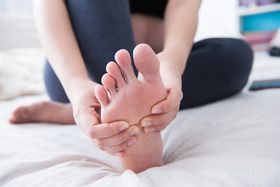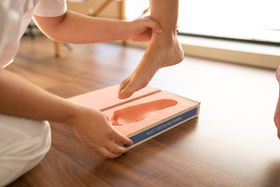Upstep Answers
Our team answers your questions about the causes and treatment of various podiatric conditions, including plantar fasciitis, flat feet, foot pain, and the use of custom orthotics.
Recent Answers
Can Crocs Ease the Symptoms of Plantar Fasciitis?
Are you tired of plantar fasciitis pain? Find out if the internet sensation Crocs can be a surprising solution.
Asked 9 months ago
Bunion vs. Gout: What Is the Difference?
People have pain in the big toes for different reasons, and bunions and gout are two of the most common. While their presentation is similar, gout shouldn't be mistaken for bunions as they aren't the
Asked 9 months ago
Are Custom Orthotics and Insoles Eligible for HSA, HRA, and LPFSA?
There are several health benefit plans. Each plan has its own advantages and covers specific medical treatments. Insoles, custom orthotics, orthopedic shoe inserts, and several other assistive and cor
Asked 9 months ago
Are Crocs Good for Standing and Walking All Day?
Over the years since its establishment, Crocs have become a popular footwear option for people everywhere. Soon after their release, they were often only used in pool areas, beaches, and yards. Now, i
Asked 9 months ago
Best Tennis Ball Exercises for Plantar Fasciitis
Plantar fasciitis is caused by a thickening and inflammation of the plantar fascia at the sole of the feet and causes significant pain. It can be easily treated at home using rest, ice, and custom ort
Asked 10 months ago
Related Articles

8 Best Plantar Fasciitis Exercises for Strength, Flexibility & Mobility
Babafemi Adebajo
February 17, 2023

Treatment of Plantar Fibroma: Exercises, Insoles, and More
Babafemi Adebajo
August 4, 2025

Best Tailor's Bunion Exercises
Janik Sundstrom
July 29, 2025

5 Daily Exercises for Peripheral Neuropathy Relief
Babafemi Adebajo
July 11, 2025

Best Insoles for Claw Toe
Babafemi Adebajo
May 14, 2025
Recent Posts
Babafemi Adebajo
Treatment of Plantar Fibroma: Exercises, Insoles, and More
Dr. Leah Alexander
What Causes Pigeon Toe and How You Can Correct It
Upstep Staff



